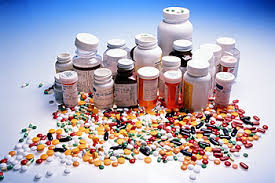
Pharmacy costs are getting a great deal of attention these days with the government and PhRMA battling back and forth. In an article written last September in the Milwaukee Journal/Sentinel Business section, there were some key points discussed on why many businesses are seeing their pharmacy drug spend increase 12-15%, and beyond. I thought this might provide some insight to those who are experiencing overall increases in prescription drugs.
Here are the 6 Top reasons they believe drug prices are rising:
Price Controls: The US government doesn’t regulate prices, unlike many countries where government agencies negotiate prices for every drug. In the US, drug-makers set wholesale prices based mostly on what competing brand-name drugs cost and whether their new drug is better.
Lengthy Patents: Patents last longer here than in other counties, usually giving a drug’s maker exclusivity that prevents competition for 20 years from when the patent is issued because patents are filed while drugs are still in testing, that clock starts ticking long before the drug goes on sale. Typically new drugs end up with a monopoly for roughly a dozen years. Their makers generally increase their prices every year, by about 5% or more.
Limited Competition: For many drugs, there isn’t enough competition to hold down prices. Many older generics drugs were priced too low to be very profitable, so some drug-makers stopped making them. When only one or two companies make a drug, the price usually shoots up. For older, brand-name drugs that treat conditions too rare to attract multiple manufacturers, the sole maker has a de facto monopoly. The large backlog of generic drugs awaiting US regulatory approval means that for some off-patent drugs, only one or two generic versions have been approved. That limits reductions from the brand-name drug’s price. Also, several drug-makers recently have been buying rights to older drugs, then increasing the price.
Small Markets: Many new drugs are for rare conditions or cancer sub-types involving a particular genetic mutation, so they might help just thousands or hundreds of patients. To recoup research and development costs, drug-makers set very high prices, though they offer many patients financial assistance.
R&D, production costs: research is becoming increasingly expensive. Industry groups say it can take about a decade and well over $1 billion to get a new drug approved, though that includes development costs for the many drugs that don’t work out. The most expensive new drugs are biologics, produced by livings cells under very precise conditions.
Fewer New Generics: After a huge wave of patent expirations from 2011 through 2013, the number of popular drugs going off patent has declined. That has meant less competition from generics.
Overall, pharmacy drug spend is estimated to continue with double digit increases over the next few years. When you apply the Rule Of 72 to these type of increases, it won’t take long for costs to double.
One option to try to mitigate some of these costs is to evaluate the type of Pharmacy Benefit Manager (PBM) you are utilizing – Pass Through, Traditional, or Transparent. Additional, and very effective options exist for Specialty Drugs as well. I will talk about these in an upcoming article.
